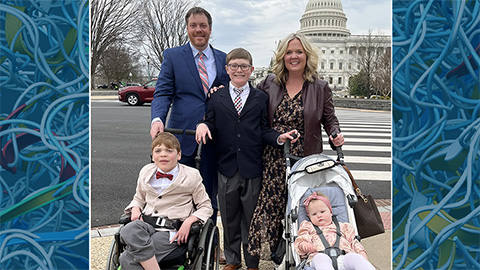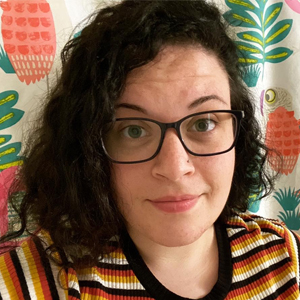How a volunteer experience turned me into a lifelong blood donor
In the summer of 2013, when I was 16 years old, I volunteered at Camp Sunshine, a retreat in Casco, Maine, for children experiencing life-threatening illnesses. It was during this service experience that I first recognized how essential blood transfusions are for some people to just live their lives. It also turned me into a lifelong volunteer.
Camp Sunshine is a wonderful place where families can go for respite and fun. Situated on Sebago Lake, the camp in its 37 years of work has supported more than 50,000 children from all 50 states and 27 other countries.
It has a physician available 24 hours a day during sessions, as well as an 18-hole miniature golf course, archery range, climbing wall and ropes course, just to name a few amenities. Importantly, the programs are free for all families and funded by donations from individuals, groups and companies, such as Tropical Smoothie Café, which has donated more than $6 million.
The camp has sessions themed around various illnesses, and that summer I learned I’d volunteered during Diamond–Blackfan anemia week. At first, I was puzzled, as I didn’t know what DBA was. So, like any good budding scientist, I turned to Google and spent hours on end researching the disease so that I would be prepared.

About DBA
Diamond–Blackfan anemia is a rare autosomal dominant disorder that emerges during neonatal development. It affects the bone marrow’s ability to develop red blood cells, leading to severe anemia. It is treated first with corticosteroids and blood transfusions.
“Our patients are typically transfusion-dependent for the first 12 to 18 months of life,” Dawn Hollstein–Baumgardner, executive director of the Diamond Blackfan Anemia Foundation, told me. “Those not responding to corticosteroid therapy may require packed red blood cell transfusions every three to five weeks.”
DBA can be cured by a bone marrow transplant, which becomes necessary when patients become transfusion-dependent because too many transfusions will lead to iron overload and organ damage.
Scientists are working to better understand the genetics and molecular signatures of DBA as well as searching for less toxic treatments and therapeutic cures. That being said, the research into DBA is still in its infancy, as the precise mechanism is still unknown.
Advocates hope that in the next few years there will be a federal push to fund research on DBA and other rare, understudied diseases.
On assignment at Camp Sunshine
During my time as a volunteer during the DBA session, I worked in the Tot Lot, a room for children ages 3 to 5 years old. I spent my week playing make-believe café at a little house, running around on the playground, blowing bubbles, and making a lot of arts and crafts.
In the years since, I’ve returned to volunteer many times, and one thing that takes my breath away every single session is the talent show.
No matter what is going on with them medically, the children are always willing to get on stage and belt out “Let It Go” from the film “Frozen” — even if 17 other children also sang the same song before them.

DBA patients depend on donors
Over the years, I’ve met tons of children and adults with DBA and doctors studying DBA from across the world.
Terri-Lynn Hart’s 17-year-old daughter Grace requires three units of blood in each transfusion. She has received 240 blood transfusions over her lifetime, which amounts to hundreds of units of blood
“Because you give the gift of life,” Hart said, “others get the gift of another birthday, another Christmas, another day with family and friends.”
She encourages people to put themselves in her shoes: “What if it was your loved one? How would you feel knowing that to live they have to rely solely on the kindness of others to donate blood?”
Caroline Butler Kelley’s 9-year-old son Cole has DBA and went through two bone marrow transplants last year.

“Blood donation kept him alive for eight years,” she told me. “Then the marrow registry saved his life!”
If you have donated blood before with the American Red Cross, you have probably gotten a text message, phone call or email urging you to donate blood in response to a national shortage. But donating year-round is important too. Hospitals need to have a stocked supply for surgeries and medical emergencies, and patients with chronic illnesses, including children with DBA, count on donations on a regular basis.
“Our DBA community is small, yet welcoming and unified. We are grateful for the efforts, hard work and commitment of all who touch our lives — including those who donate their blood to literally keep our patients alive,” Holstein–Baumgardner said.
Becoming a donor for life
After I volunteered at Camp Sunshine for the first time during DBA week, I joined the bone marrow registry because I hope to be someone’s match someday. And, since I am fortunate enough to have functional erythroid progenitor cells, I’ve made a promise to myself to donate blood as often as I can so that no families need to worry about a blood shortage.
Finally, writing this article reminded me of how much love and perspective Camp Sunshine provides. I started with one session when I was 16, and, in the past nine years, I have volunteered for about 30 sessions.
Camps like this exist throughout the United States and world. If volunteering is something you’re interested in, I recommend you seek one out because it could change your life like Camp Sunshine has changed mine.
Enjoy reading ASBMB Today?
Become a member to receive the print edition four times a year and the digital edition monthly.
Learn moreGet the latest from ASBMB Today
Enter your email address, and we’ll send you a weekly email with recent articles, interviews and more.
Latest in Opinions
Opinions highlights or most popular articles

Debugging my code and teaching with ChatGPT
AI tools like ChatGPT have changed the way an assistant professor teaches and does research. But, he asserts that real growth still comes from struggle, and educators must help students use AI wisely — as scaffolds, not shortcuts.

AI in the lab: The power of smarter questions
An assistant professor discusses AI's evolution from a buzzword to a trusted research partner. It helps streamline reviews, troubleshoot code, save time and spark ideas, but its success relies on combining AI with expertise and critical thinking.

How AlphaFold transformed my classroom into a research lab
A high school science teacher reflects on how AI-integrated technologies help her students ponder realistic research questions with hands-on learning.

Writing with AI turns chaos into clarity
Associate professor shares how generative AI, used as a creative whiteboard, helps scientists refine ideas, structure complexity and sharpen clarity — transforming the messy process of discovery into compelling science writing.

Teaching AI to listen
A computational medicine graduate student reflects on building natural language processing tools that extract meaning from messy clinical notes — transforming how we identify genetic risk while redefining what it means to listen in science.

What’s in a diagnosis?
When Jessica Foglio’s son Ben was first diagnosed with cerebral palsy, the label didn’t feel right. Whole exome sequencing revealed a rare disorder called Salla disease. Now Jessica is building community and driving research for answers.

